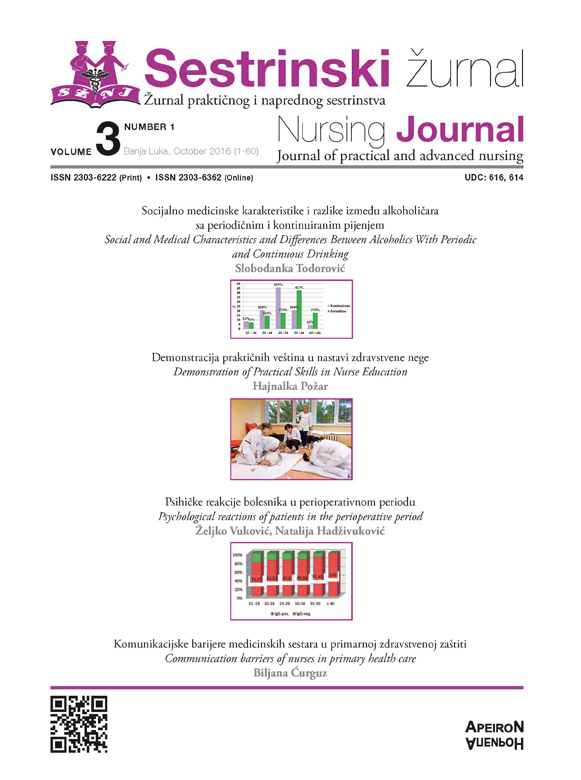Uticaj faktora rizika na nastanak hroničnih nezaraznih bolesti / The influence of risk factors for chronic non-communicable diseases
DOI:
https://doi.org/10.7251/SEZ0116024jAbstract
The world today is faced with a growing increase in chronic non-communicable diseases (CNB), which become the leading cause of death. In 2012, the CNB were responsible for 38 million (68%) of all the 56 million deaths. Of that number, more than 40% died were younger than 70 years, and more than 82% of deaths were in underdeveloped and developing countries.
The main risk factors in the development of the CNB are hypertension, hyperlipidemia, hyperglycemia, obesity and smoking. Reducing risk factors and timely detection and treatment is the least expensive way to solve the non-communicable diseases. The depletion of CNB has guiding public policy to promote the prevention, early detection and treatment of these diseases. In order to evaluate how successful strategies to combat rate for the Republica Srpska we examined the prevalence of risk factors for CNB at 1,454 patients older than 18 years in a team of family medicine DZ Banja Luka.
The results indicate that high blood pressure is present in 40% of patients, dyslipidemia in 60%, with a high presence of hyperglycemia 23.5%. Smoking as a risk factor is present in 41% of subjects. One in five respondents were obese (BMI> 30).
Our results suggest that the measures in the Republica Srpska invest in the prevention and treatment of CNB are not successful and are similar to those in the least developed countries.

